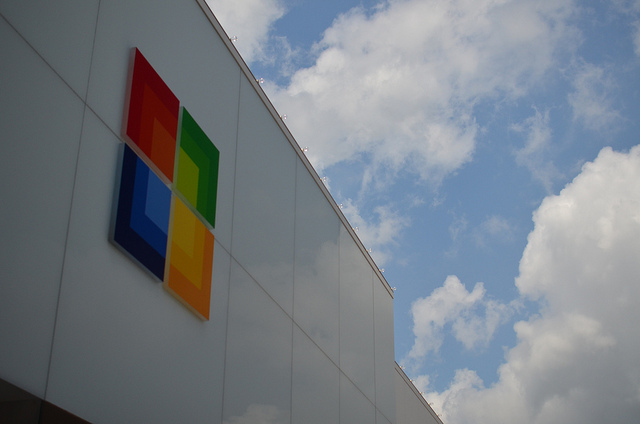What are we supposed to make of Microsoft? Has it finally found its groove, or is it a desperate wannabe consumer brand?
At the company’s recent BUILD conference, the Redmond-based software giant showed off Windows 10 and a new browser. It attempted to woo iOS and Android developers and did a second demo of its HoloLens augmented reality headgear. And, its cloud-based Azure platform is a chart-buster. At first blush, it looked like it was firing on all cylinders.
The new Microsoft Edge browser got voice assist from Microsoft’s Siri/Alexa/Google Now pretender, Cortana. Windows 10 looks clean, slick and fast, and is supposed to run everywhere — desktop to phone. And the idea that a few simple code tweaks would let developers for other popular platforms have their games and apps run on Windows is appealing. The HoloLens demo, with phantom dogs, screens, 3D models and weather apps floating like snow globes was a “shut up and take my money” moment.
But it’s never always sunny in Redmond. For years the company has been trying to make up for lost ground in the smartphone category. Windows phones, especially the Lumia series, sport beautiful hardware that almost nobody wants to use and few developers are keen to spend time creating apps for. Android and iOS devices have far outstripped Microsoft in this growing consumer space. And, Apple MacBooks and Google’s cheap Chromebooks have gnawed at the edges of Microsoft’s desktop market share for years. Microsoft, by charging for its operating system, forced Windows PC makers to cut corners on the hardware and bloat the desktop with crapware no one wants.
So, even though Windows 10 looks smart on a smartphone, it’s probably too little, too late for Microsoft. And, that’s why the company’s announcement of software tools that let app developers easily port their apps seems more Hail Mary than hallelujah. For apps that are more than just simple games, it takes more than just code porting to create a compelling application that plays to the strength of a new platform. Plus, there’s a huge investment in promotion and marketing required by developers, especially for a smartphone platform that’s about as popular as a pork jowl casserole at a vegan potluck. But Microsoft was trying.
Joe Belfiore, Microsoft’s Corporate VP of the Operating Systems Group, showed off Windows 10 running on a Windows Phone that when tethered with a screen worked like a Windows 10 desktop.
Unfortunately Belfiore has the supercilious anti-charisma of a bizarre-world Steve Jobs, and the demo was running a device that really doesn’t exist yet, if it ever will, if it will sell.
And, although the HoloLens demo at BUILD has a ton of wow, hands-on testing of the platform by tech journalists let the air out of the trial balloon pretty quickly. At the BUILD demo we saw augmented “holograms” planted and projected all over a stage living room. But, tech reviewers report, the actual HoloLens unit they got to try only projects the 3D images in a small square in front of the user, sort of like a peep show. Microsoft was accused of overselling and under-delivering. It may well be that, in a few years’ time, if Microsoft can keep its focus, HoloLens may live up to its promise. But right now it’s shaping up to be Redmond’s Google Glass — too much hype, too soon.
So, where does that leave Microsoft? In the consumer space, I’d say, not that much further ahead. It’s too late for their phones to take off, with consumers or developers. On the other hand, it’s doing great in the cloud. Azure is a hit with businesses. And that’s where, I think, Microsoft should focus. There’s just not enough airspace over Redmond for clouds and pie in the sky at the same time.
Listen to an audio version of this column, read by the author, here.
Wayne MacPhail has been a print and online journalist for 25 years, and is a long-time writer for rabble.ca on technology and the Internet.
Photo: Michael Kappel/flickr




